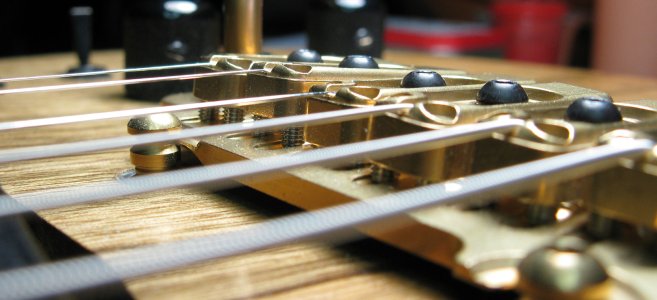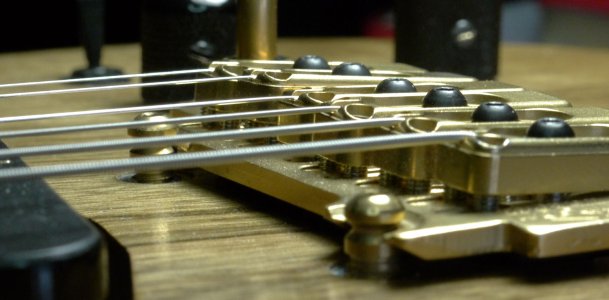Sorry for necro posting (not really

)
It's great to see the ideas here, especially the from scratch way of matching the neck radius,
but I (personally) have never been comfortable playing a setup that follows the neck radius,
so I always do my setup by feel and by sound.
The only point I'd like to make here, is that rules are good starting points if we're not sure where to start,
but hopefully we trust our instincts and feelings about our instruments first,
and if need be, bend them to our needs, based on those sensations, in the moment, while playing,
even if it totally breaks the rules.
My natural inclination is an odd wave shape that might be able to be seen in the attached photo,
but to describe it ...
I first go for getting a firm sensation on each string, alone ... good pull off,
good hammer on, chromatically over 4 fingers only picking the first note and then after that,
make sure that transitioning from one string to an other is moderately comfortable with out sacrificing too much feel or tone. I like a high action because of the tone and dynamic range.
I'm always willing to sacrifice speed for tone and dynamics.
Generally, most always it comes out like a ramp up from the low E to the D, then the G is slightly lower than the D, and the B is always higher than the G and then the Hi E is slightly lower than the B.
Yea, I know all of this is my own subjective thing, but I'd not be able to articulately express myself
if I didn't set up my guitars the way I do.
So ... long story short ...
never fear doing your own thing and making your instrument talk for you,
the best way you know how, ... even if it breaks rules.




